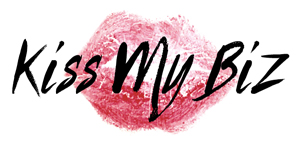While there are various press release templates available that will get the job done, effective press releases tend to share most of the same elements. Here are common press release components, and a description of what they are and how they make the press release more effective.
Release Time
This line graces the top of nearly every press release distributed to the media. It tells the journalist or editor receiving it when the information in the release can be made public. Most often, that line will read FOR IMMEDIATE RELEASE. If the news isn’t permitted to be released until a later point in time, the release time would read EMBARGOED UNTIL with the release date listed afterwards.
Contact Info
At a bare minimum, every press release should include the full name of the appropriate media contact person, their phone number, and their email address. A website URL should also be added, and a mailing address can be added optionally. The idea is to make it easy for journalists to contact someone related to the news story if they need additional information. Having no, or incomplete, media contact info on a press release is quite possibly the biggest press release writing mistake you can make.
Headline
The headline is like a title. It needs to convey your general news and grab the interest of the reader right away. A common error is trying to make the headline overly “cute” rather than having it tell the journalist immediately what the news is. If you can do both, great. If not, focus the headline on the news angle… just make sure you have a solid and interesting news angle to begin with.
Subheading / Summary
Generally, there’s no need to have both a subheading and a summary, so choose the best option for your press release and distribution model. They each serve the same purpose – to expand upon the news very generally mentioned in your headline. Many online distribution outlets require a summary to be included.
Dateline
The dateline will include the date the release is being distributed, as well as the hometown or nearest metropolitan area of the company or individual presenting the news to the media.
Opening Paragraph
The opening or lead paragraph should start on the same line as the press release’s dateline, and expands upon the headline by answering the following questions briefly: who?, what?, when?, where?, and why?
News Release Body
The body of your news release expands upon the news being presented by offering supporting details, statistics, or background information. This is where you would include quotes in your press release. The body of the press release should follow the basic inverted pyramid writing style of journalism, where the most newsworthy information is offered first, with a trickle down effect through the least newsworthy supporting details.
Boilerplate
The boilerplate is a more general background or “about us” paragraph regarding the person, company, or organization presenting the news. The purpose of the boilerplate is simply to provide background information to journalists, giving them a better idea of who the issuing source of the news is.
Call to Action
If you want members of the media to take any specific action, you’ll mention that at the end of the press release. This is very often just a line such as “For more information about CompanyABC or this particular news story, please contact Contact’s Name at contact’s phone number.”
Closing
You need to let editors and/or journalists know when your release is finished, so they don’t assume that there’s another page or addenda attached. There are a few different symbols you can use to close a press release, including “###” and “-30-“. If you do have a second page, you could end your first page with something like -more-, and if you have any addenda attached (such as photos), you should mention it at the end of the news release.
